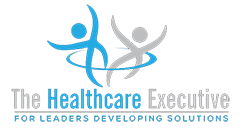Optimizing Healthcare Delivery through Patient-Centric Technology

Optimizing Healthcare Delivery through Patient-Centric Technology
Introduction
In 2024, the integration of patient-centric technology continues to revolutionize healthcare delivery, offering new ways to enhance patient engagement, streamline clinical processes, and improve treatment outcomes. Healthcare executives must focus on leveraging these technologies to ensure their organizations are providing efficient, effective, and patient-focused care. This blog discusses key strategies for healthcare leaders to optimize healthcare delivery by harnessing patient-centric technologies.
The Importance of Patient-Centric Technology:
Patient-centric technologies focus on the patient’s needs and preferences, aiming to enhance the quality of care and patient satisfaction. These technologies range from telehealth platforms and mobile health apps to advanced patient monitoring systems and personalized medicine solutions. Implementing these tools can significantly improve accessibility, personalize treatment plans, and enhance the overall patient experience.
Strategies for Leveraging Patient-Centric Technology:
- Enhance Telehealth Services:
- Expand and refine telehealth offerings to include a broader range of services, such as virtual consultations, remote patient monitoring, and digital health assessments. Ensure that these services are easy to use and accessible to all patients, including those with limited technological skills.
- Implement Personalized Medicine Technologies:
- Utilize technologies that support personalized medicine, such as genomic testing and data analytics tools that analyze large datasets to tailor treatments to individual genetic profiles, lifestyle, and health history.
- Adopt Patient Portals and Mobile Health Apps:
- Promote the use of patient portals and mobile health applications that enable patients to manage their health more effectively. These tools can help patients schedule appointments, access medical records, communicate with healthcare providers, and track their health metrics.
- Invest in Wearable Health Technology:
- Encourage the adoption of wearable devices that monitor health metrics in real-time. These devices can provide critical data to healthcare providers and empower patients to take an active role in their health management.
- Enhance Data Integration:
- Ensure that all patient-centric technologies are integrated with existing healthcare IT systems, such as EHRs. Seamless integration improves data flow and accessibility, making it easier for healthcare providers to deliver coordinated care.
- Focus on Usability and Accessibility:
- Design technology solutions that are intuitive and accessible to all users, including the elderly and those with disabilities. Consider factors like user interface design, language options, and technical support.
- Train Staff and Educate Patients:
- Provide training for healthcare staff to ensure they are proficient in using new technologies and can assist patients effectively. Additionally, offer educational resources to help patients understand how to use these technologies to manage their health.
Challenges in Implementing Patient-Centric Technology:
- Privacy and Security Concerns: As patient data becomes increasingly digital, ensuring the privacy and security of this information is paramount.
- Digital Divide: Addressing disparities in access to technology is crucial to avoid exacerbating health inequities.
- Cost and Resource Allocation: Investing in new technologies can be costly, and securing funding and resources is often a significant challenge.
Conclusion
Optimizing healthcare delivery through patient-centric technology not only enhances patient care but also drives efficiency and effectiveness across healthcare systems. By strategically implementing these technologies, healthcare executives can ensure their organizations are well-equipped to meet the demands of modern healthcare.
Call to Action
Healthcare leaders should assess their current technology landscape, identify gaps, and prioritize investments in technologies that align with their strategic goals. Collaborating with technology partners, engaging stakeholders, and continuously evaluating the impact of these technologies will be key to successful implementation.



